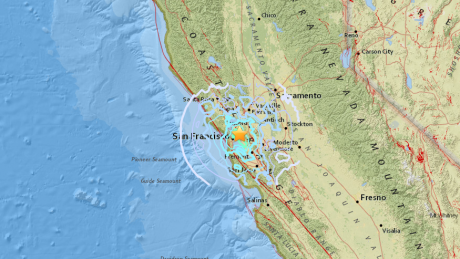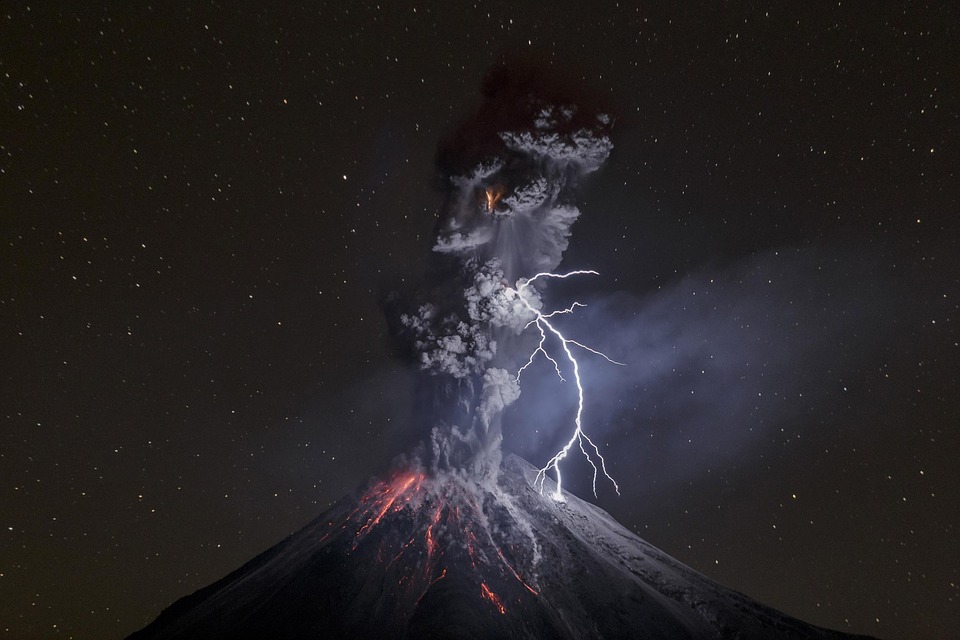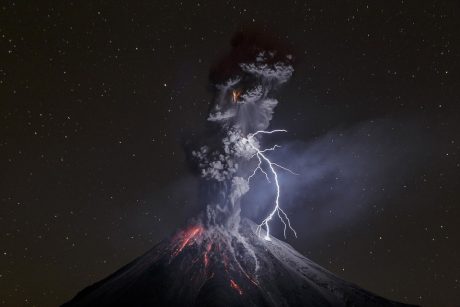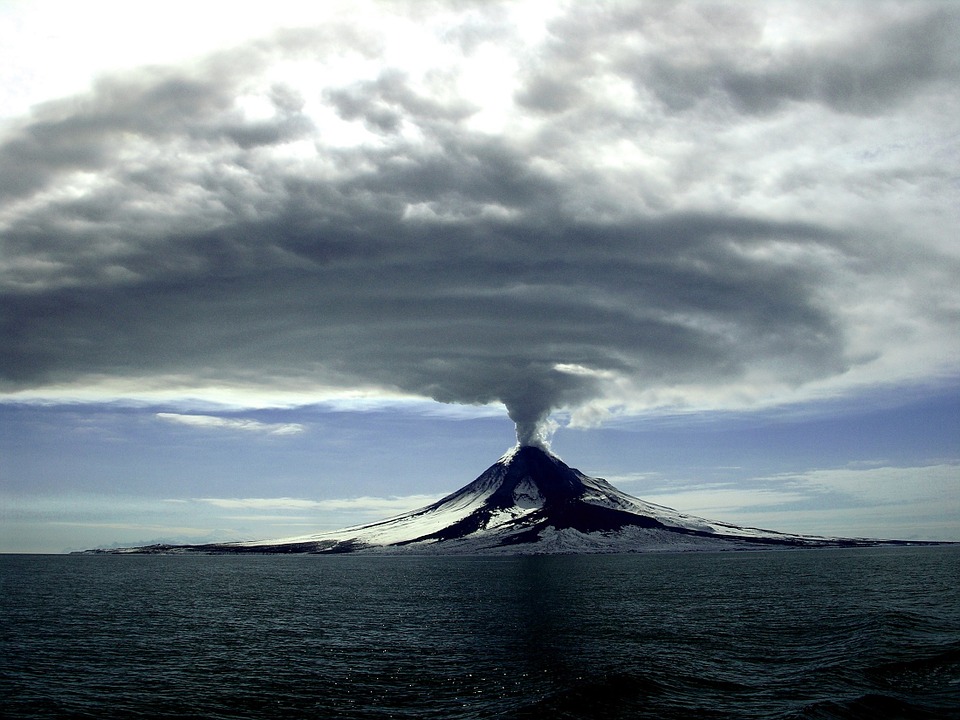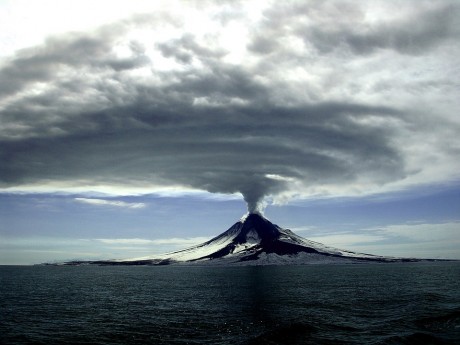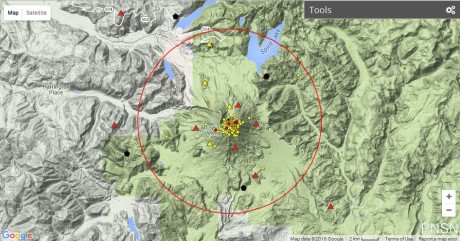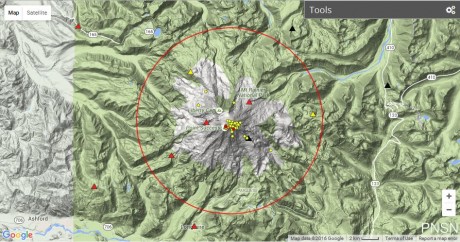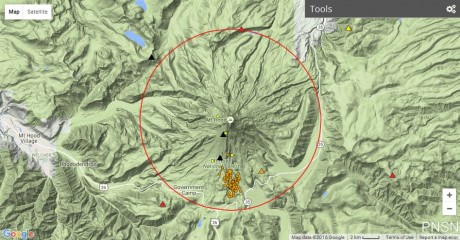 Mt. Rainier and the New Madrid fault zone are both shaking, and a catastrophic seismic event at either location would cause death and destruction on an unimaginable scale. Mt. Rainier has been called “one of the most dangerous volcanoes in the world”, and scientists tell us that it is just a matter of time before a major eruption occurs. When that day finally arrives, Mt. Rainier has the potential to bury hundreds of square miles with a colossal tsunami of super-heated mud that is literally several hundred feet deep. And since Mt. Rainier is very close to major population centers, we are talking about the potential for the worst disaster that we have seen in modern American history. But a massive earthquake along the New Madrid fault zone actually has the potential to be far worse. A very deep scar under the ground that was created when North America was originally formed has made that part of the country very mechanically weak, and many experts believe that a big enough earthquake along that fault zone could literally rip the United States in half.
Mt. Rainier and the New Madrid fault zone are both shaking, and a catastrophic seismic event at either location would cause death and destruction on an unimaginable scale. Mt. Rainier has been called “one of the most dangerous volcanoes in the world”, and scientists tell us that it is just a matter of time before a major eruption occurs. When that day finally arrives, Mt. Rainier has the potential to bury hundreds of square miles with a colossal tsunami of super-heated mud that is literally several hundred feet deep. And since Mt. Rainier is very close to major population centers, we are talking about the potential for the worst disaster that we have seen in modern American history. But a massive earthquake along the New Madrid fault zone actually has the potential to be far worse. A very deep scar under the ground that was created when North America was originally formed has made that part of the country very mechanically weak, and many experts believe that a big enough earthquake along that fault zone could literally rip the United States in half.
But before we discuss the New Madrid fault zone, let’s talk about what just happened at Mt. Rainier first.
According to the USGS, Mt. Rainier was hit by a magnitude 3.6 earthquake on Sunday afternoon…
After a spurt of seismic activity this weekend, Mount Rainier National Park was shaken by a 3.6 magnitude earthquake Sunday afternoon.
The quake hit at 12:31 p.m. and was felt as far as Kent, nearly 80 miles away, the U.S. Geological Survey reported. The relatively shallow quake was centered roughly a mile beneath the earth’s surface.
In addition to that quake, there have been quite a few others in recent days.
In fact, it is being reported that Mt. Rainier has been hit by “more than a dozen” earthquakes since Thanksgiving day.
The Seattle Times is assuring us that this is perfectly normal, but they are also warning their readers that they “should prepare for what might happen in the event of an eruption” just in case…
Regardless, people living near Mount Rainier should prepare for what might happen in the event of an eruption, said Wes Thelen, a research seismologist at the Cascade Volcano Observatory. Specifically, an eruption could cause lahars — large volcanic mudflows — to rip down the side of the mountain.
Many of my readers clearly remember the eruption of Mount St. Helens in 1980, but a catastrophic eruption of Mt. Rainier would be so much worse that the two events would not even be worth comparing. The following comes from Wikipedia…
If Mt. Rainier were to erupt as powerfully as Mount St. Helens did in its May 18, 1980 eruption, the effect would be cumulatively greater, because of the far more massive amounts of glacial ice locked on the volcano compared to Mount St. Helens,[40] the vastly more heavily populated areas surrounding Rainier, and the simple fact that Mt Rainier is a much bigger volcano, almost twice the size of St. Helens.[49] Lahars from Rainier pose the most risk to life and property,[50] as many communities lie atop older lahar deposits. According to the United States Geological Survey (USGS), about 150,000 people live on top of old lahar deposits of Rainier.[9] Not only is there much ice atop the volcano, the volcano is also slowly being weakened by hydrothermal activity. According to Geoff Clayton, a geologist with a Washington State Geology firm, RH2 Engineering, a repeat of the 5000-year-old Osceola Mudflow would destroy Enumclaw, Orting, Kent, Auburn, Puyallup, Sumner and all of Renton.[39] Such a mudflow might also reach down the Duwamish estuary and destroy parts of downtown Seattle, and cause tsunami in Puget Sound and Lake Washington.[51] Rainier is also capable of producing pyroclastic flows and expelling lava.[51]
A lahar is essentially a giant tsunami of super-heated mud, and they can be hundreds of feet high. If you live in that region, you might be thinking that you will just outrun any lahar that is headed your way, but the truth is that the highways will instantly be jammed once an eruption happens and a lahar can travel at speeds of up to 50 miles per hour. The following is how one author described the danger that those living in the area could potentially be facing…
The numerous towns and cities that occupy the surrounding valley would all be at risk for not only severe destruction, but complete annihilation. Residents of cities like Orting, Sumner, Buckley, and Enumclaw are estimated to have no more than 30 minutes before the lahar, speeding down from the many rivers that flow from Mount Rainier, buries their homes and businesses beneath as much as 30 feet of mud and debris. Even the larger cities like Auburn, Puyallup, and Tacoma itself are not safe. Auburn and Puyallup, with nearly 80,000 residents between them, would be covered in 20 feet of mud in less than an hour, and Tacoma, at almost 200,000, is estimated to be hit with nearly 10 feet from the lahar.
As you can see, the death and destruction would be off the charts, and let us hope that such a disaster does not arrive any time soon.
And as I mentioned earlier, a major earthquake along the New Madrid fault zone has the potential to create even greater death and destruction.
According to scientists, the New Madrid fault zone sits directly above a very deep geological scar that was created when North America was formed. According to Wikipedia, this immense scar makes “the Earth’s crust in the New Madrid area mechanically weaker than much of the rest of North America”.
Today, the New Madrid fault zone is approximately six times bigger than the San Andreas fault zone in California. It covers portions of Illinois, Indiana, Ohio, Missouri, Arkansas, Kentucky, Tennessee and Mississippi, and the largest earthquakes in the lower 48 states have happened in this region.
Scientists assure us that it is just a matter of time before more catastrophic earthquakes hit this fault zone, and that is why what has been happening near the town of Ridgely, Tennessee in recent days is so concerning…
A swarm of at least 15 earthquakes reaching up to 2.1 magnitude rattled Ridgely, Tennessee — a small town near the Mississippi River — over a two-day period, the U.S. Geological Survey reports.
The other quakes in the swarm ranged from 1.1 to 1.5 magnitude, according to the USGS.
Most Americans have never heard of Ridgely, and it is definitely a very small town, but what makes this so important is that Ridgely sits directly inside the New Madrid fault zone…
Ridgely is home to just 1,657 people, according to the U.S. Census Bureau, and sits less than four miles from the banks of the Mississippi River.
It’s also part of the New Madrid Seismic Zone — which the Missouri Department of Natural Resources refers to as “the most active seismic area in the United States, east of the Rocky Mountains.”
In 1811 and 1812, four absolutely massive earthquakes along the New Madrid fault zone opened up very deep fissures in the ground, they caused the Mississippi River to actually run backwards in certain places, and they were reportedly felt as far away as Washington D.C. and Boston.
Fortunately, very few people populated the region in those days, but if such a quake happened today the death and destruction would be unimaginable. The following description of one of the quakes that happened in 1811 comes from Smithsonian.com, and for a moment I would like for you to imagine what would happen if such an earthquake happened in our time…
The Midwest was sparsely populated, and deaths were few. But 8-year-old Godfrey Lesieur saw the ground “rolling in waves.” Michael Braunm observed the river suddenly rise up “like a great loaf of bread to the height of many feet.” Sections of riverbed below the Mississippi rose so high that part of the river ran backward. Thousands of fissures ripped open fields, and geysers burst from the earth, spewing sand, water, mud and coal high into the air.
The New Madrid fault zone has altered the course of the Mississippi River before, and someday it will happen again.
We live at a time when our planet appears to be getting increasing unstable. In addition to the other earthquakes that I have already mentioned, Alaska was actually hit by a magnitude 6.0 earthquake on Monday.
Unfortunately, most Americans are not going to start caring about the warning signs until a major disaster has already happened.
Most people will simply not wake up without a major amount of shaking, and let us hope that such a day can be put off for as long as possible.
About the Author: I am a voice crying out for change in a society that generally seems content to stay asleep. My name is Michael Snyder and I am the publisher of The Economic Collapse Blog, End Of The American Dream and The Most Important News, and the articles that I publish on those sites are republished on dozens of other prominent websites all over the globe. I have written four books that are available on Amazon.com including The Beginning Of The End, Get Prepared Now, and Living A Life That Really Matters. (#CommissionsEarned) By purchasing those books you help to support my work. I always freely and happily allow others to republish my articles on their own websites, but due to government regulations I need those that republish my articles to include this “About the Author” section with each article. In order to comply with those government regulations, I need to tell you that the controversial opinions in this article are mine alone and do not necessarily reflect the views of the websites where my work is republished. This article may contain opinions on political matters, but it is not intended to promote the candidacy of any particular political candidate. The material contained in this article is for general information purposes only, and readers should consult licensed professionals before making any legal, business, financial or health decisions. Those responding to this article by making comments are solely responsible for their viewpoints, and those viewpoints do not necessarily represent the viewpoints of Michael Snyder or the operators of the websites where my work is republished. I encourage you to follow me on social media on Facebook and Twitter, and any way that you can share these articles with others is a great help.


